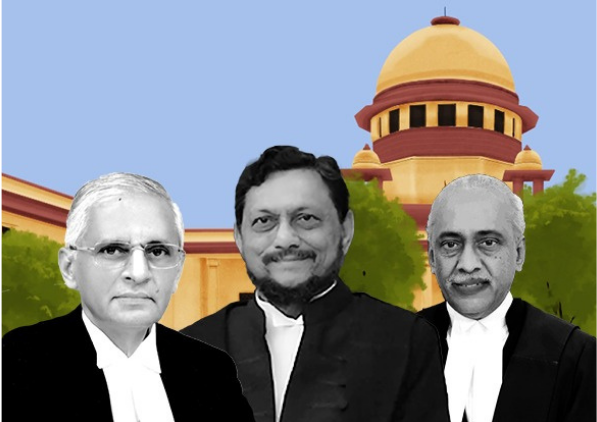“In Interest Of Common Public; Don’t Shelve It Like This”: Supreme Court In PIL Seeking Installation Of Engineered Material Arresting System At Vulnerable Airports

Supreme Court bench of Chief Justice SA Bobde, Justice AS Bopanna, Justice V Ramasubramanian, while hearing a plea seeking installation of EMAS and an enquiry over default of not procuring it earlier, directed to make representations to the Union and listed the matter after 2 months.
The bench while hearing the matter today, considered the reports by experts to observe; "There are reports which reflect immense danger in the airports mentioned"
Adv. Shohit Choudhry appeared for the petitioners. It was his submission that the Counter filed by the Union did not appreciate the true facts.
Learned ASG Ms. Aishwarya Bhati appeared for the Union.
The present Writ Petition has been filed by an 85 year old mechanical engineer, seeking installation of Engineered Material Arresting System (EMAS) at vulnerable airports across India, including those at Mangalore and Calicut and an enquiry and appropriate action against the respondent officials, omitting to take requisite action despite specific knowledge.
“The Court of Inquiry, appointed to investigate into the Mangalore crash in 2010, specifically recommended that systems like the EMAS should be installed on the runway overshoot areas, especially for table top airports like Mangalore. Despite the same, no action has been taken by the Respondents till date”, the plea states.
Enumerating the features and advantages of an EMAS, the plea inter-alia states;
- The EMAS system is an arrestor bed which uses crushable material placed at the end of a runway to stop an aircraft that overruns the runway. This crushable material generally consists of concrete blocks.
- It easily stops/arrests aircraft going at the speed of 70 knots or less. This is when no braking contribution from aircraft reverse thrust is considered.
- The wheels of the plane dig into the concrete and a controlled deceleration, due to the drag forces produced from the wheels to the landing gear of the aircraft, brings the airplane to a smooth halt, within a pre-determined distance. This minimizes/virtually eliminates the potential for aircraft nose gear collapse and/or injury to passengers/crew.
- The arrestor bed is easily accessible by rescue and recovery vehicles.
- The system is tailor-made for each airport depending on factors like runway width, space available, longitudinal slope, transverse slopes, soil conditions at the airport, weather conditions prevailing in the region, type of aircraft operating at the airport, etc.
- It reduces the 1000 feet Runway End Safety Area (RESA) requirement to 600 feet or less.
- It is conditioned to withstand the elements of nature.
- Specific airports in India were identified, wherein the system could be installed. A total of 10-12 airports were identified including ones at Calicut, Mangalore, Bagdogra, Shimla, etc.
Highlighting the default at the end of Respondents, the plea further states;
“The existence of EMAS was brought to the knowledge of AAI and the Respondents in 2008, however, for no plausible reason, the same has not been installed till date. During this time, the aviation industry has seen two horrific incidents at Mangalore (in 2010) and Calicut (in 2020) causing loss of hundreds of lives, which could have been saved by the timely action of the Respondents.”
Reflecting the Public Interest in the present petition, the petitioner submits;
“The issues raised in this Petition are to protect the fundamental right to life under Article 21 of the Constitution of India, of the citizens of India, including those involved in aircraft operations, passengers opting for air travel, airline crew, ground staff at airports, citizens involved in fire and rescue operations, medical staff etc. Apart from the citizens, the issues herein also affect persons who are not citizens of our country, however, fall in any of the above mentioned categories.”
Case Title: Rajen Mehta v. Directorate General of Civil Aviation & Anr.
